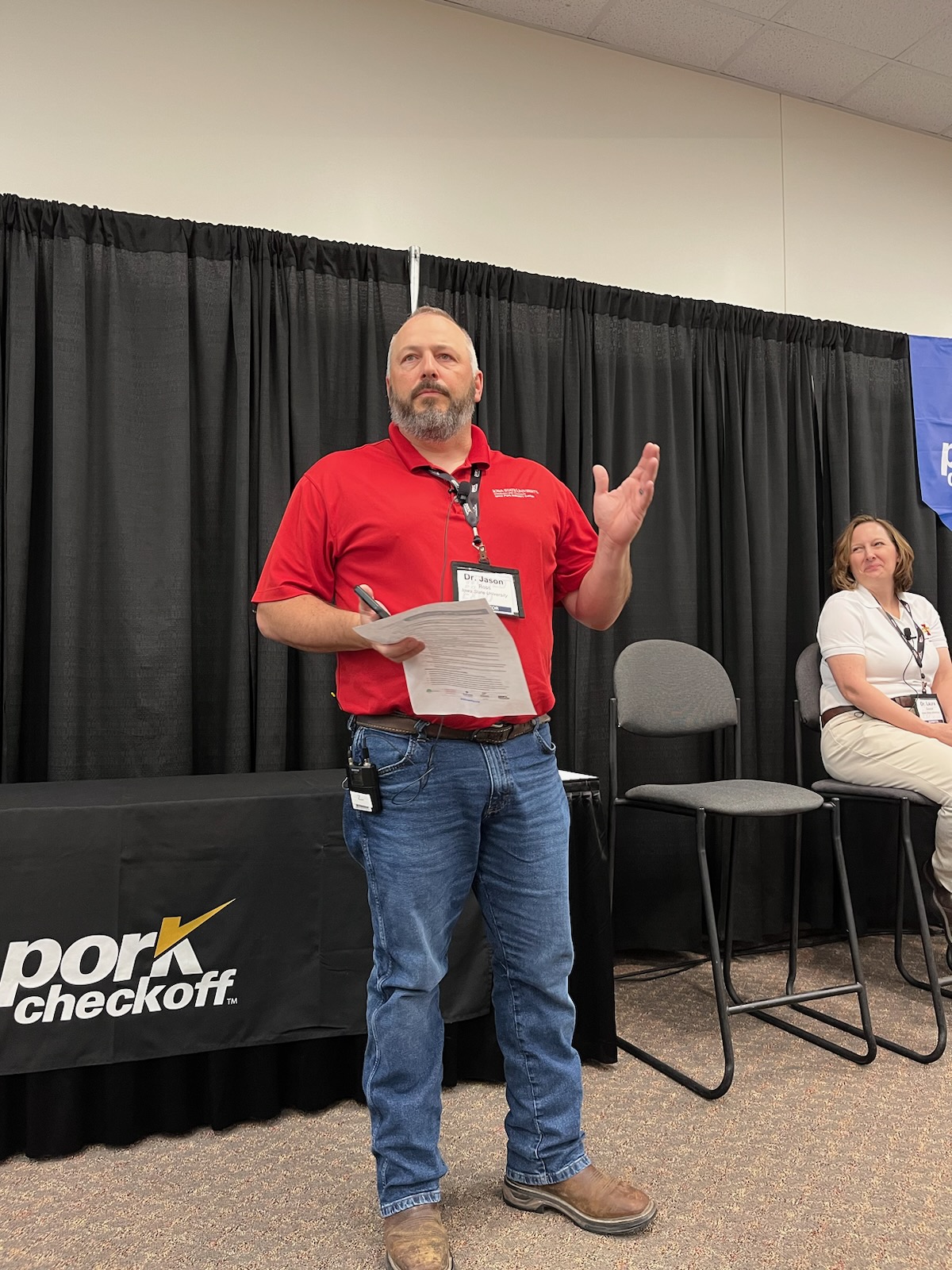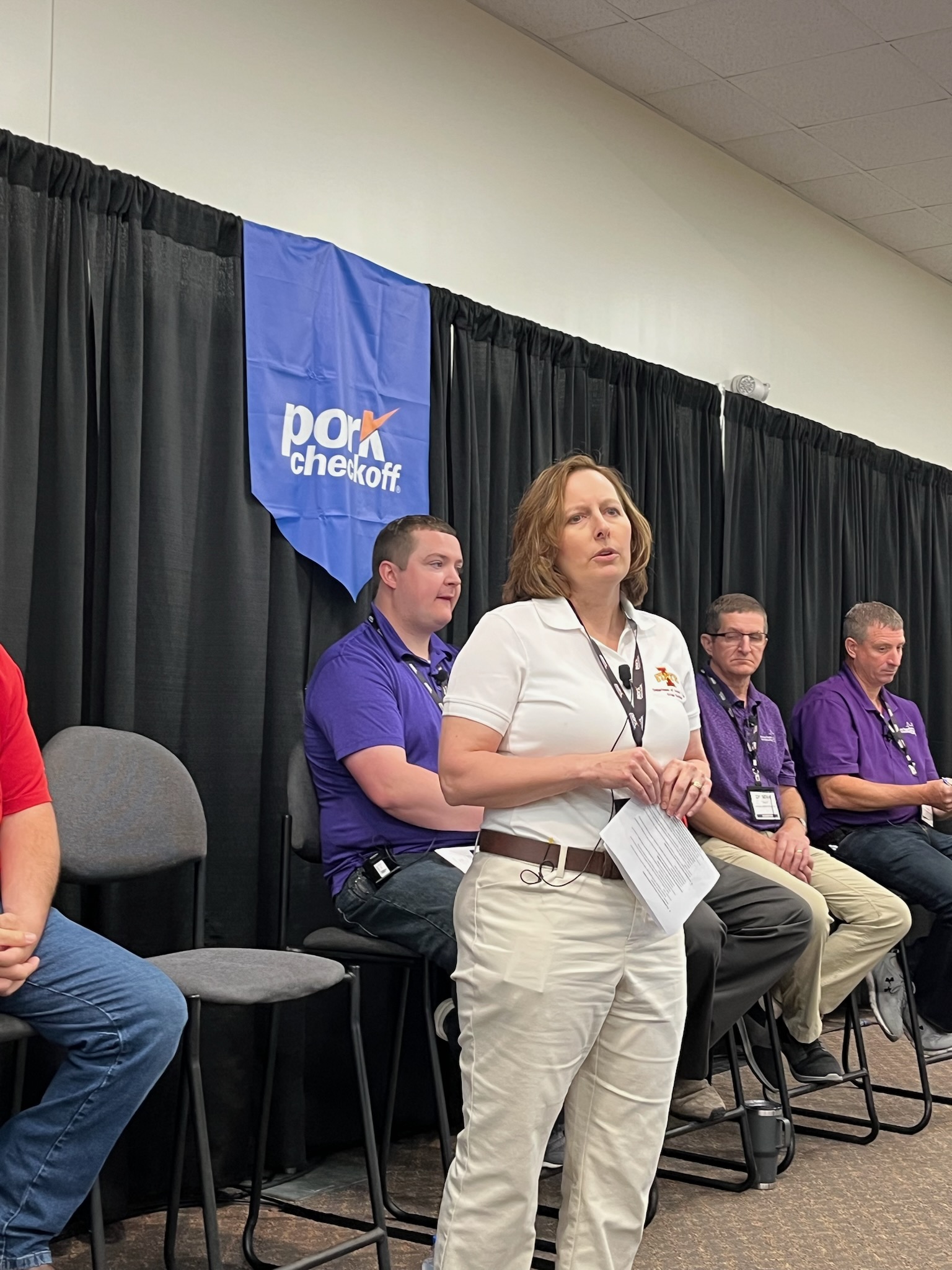“All Star Team” Discusses Pig Survivability

A who’s who of leading experts on health, nutrition, reproduction and longevity participated in a panel discussion on Thursday morning, June 8, at the 2023 World Pork Expo. Several years ago, the industry made sow longevity and pig survivability priorities, and significant Pork Checkoff dollars were invested in research projects designed to help find solutions. Industry partners and producers also supported the effort and the research findings are helping producers learn more about what causes – and what doesn’t cause – mortality in pigs and sows.
Meet the experts:
Jason Ross, PhD, chair of the animal science department at Iowa State University says 16 investigators started on the project to look at economics, mortality and factors affecting supply-chain livability.
“The overarching objective is to get information and drive down mortality,” he says.
The researchers discovered that 20% to 30% of mortality on U.S. pig farms is due to sow prolapse. “It’s a very costly problem for the pork industry that wasn’t here 10 to 12 years ago,” says Ross.
Research also showed that body-condition score has a significant impact on pelvic prolapse (thin sows have a higher probability) and farms the use bump-feeding strategies that target thin sows have statistically lower incidence of prolapse. In addition, sows that were fed more than 5 lbs. per day had fewer prolapses.
“We can accurately predict sows’ tendency to prolapse in late gestation by looking at the sows themselves and their perineal score,” Ross says. “And even if they don’t prolapse, they are likely to have fewer live piglets.”
In another study of 17,000 sows, significant heritability to pelvic prolapse was identified. The hope is that specific phenotypes can be tied to genetics to minimize the number of sows that have a predisposition to prolapse, explains Ross.
Laura Greiner, PhD, assistant professor in the animal science department at Iowa State University studies gilt development among other topics.
“We’ve done a lot of work on improving mammary development, the immune system and better understanding microbiome differences,” she says. “Our work today is a little different.”
She notes that pork producers traditionally give 11 vaccinations from the time a gilt is 50 lbs. until right before she’s bred. That creates a high inflammatory response.
“How do we mediate that inflammation and help prepare gilts physically for what we’re asking them to do?” says Greiner.
She has also looked at the effect of fat and linoleic acid in diets. In another study involving 11,000 gilts over the course of a year, “we’re trying to slow them down by about a month and see if we can improve longevity, mainly by lowering lameness.”
Jordan Gebhardt, DVM, assistant professor of swine production in the College of Veterinary Medicine at K-State University appreciates how people came together to address this problem. 
“We’ve made key findings in research, but the training component has been really helpful too,” he says. “We have a high rate of interns progressing and going on to graduate degrees.”
Gebhardt has looked at the time after weaning and its impact on post-weaning mortality. He explains that health is very important and lateral transmission of disease has a big impact on performance and survivability. “There’s a strong relationship between animals, pathogens and the environment,” he says. “It’s challenging to get to the core of the key factors driving mortality after weaning, however, management and feeding strategies around the time of weaning have an impact."
Chris Rademacher, DVM, clinical professor in Veterinary Diagnostic and Production Animal Medicine, Iowa State University has been involved in closeouts that were tied back to weekly sow information. 
“We ran it through statistical modeling and one highlight was wean age: It was really a driver,” he says. “Field data ties back to research data. The older the pigs they were when they were weaned the higher their survivability and the lower their mortality.”
He also looked at disease issues that appear together, like porcine reproductive and respiratory syndrome (PRRS) and strep suis.
“We saw higher mortality than when these issues were by themselves,” he says. “In addition, [Porcine Reproductive and Respiratory Syndrome] and mycoplasma together created significantly higher problems in downstream production.”
In terms of sow livability projects, Rademacher works with farm staff to identify at-risk sows earlier as a way to lower sow mortality on the farm. He also encourages all producers to visit www.Piglivability.org - the "Improving Pig Survivability Project" website.
Mike Tokach, PhD, distinguished professor and research coordinator at K-State University, looked at boar lines that were both late maturing and early maturing. In addition, his research has shown that mortality can be impacted with nutrition. However, “it’s relatively minor compared to genetics and health.” The bottom line is that it takes everyone but the reality is that it takes everybody. The person in the barn dictated how the results were going to come out – they had a tremendous impact on it.
We need to keep working at it, he says.
Joel DeRouchey, PhD, professor and state Extension leader in the animal science department at K-State University explains there is a summary sheet of most of the projects at www.Piglivability.org. It explains what worked and what didn’t work, noting that “what doesn’t work is just as important as the things that do work so we can invest our energy in the right spot."
“It’s important for us to capture all this information,” he adds.
There are also fact sheets with farm-level information in English as well as Spanish on topics like colostrum intake and giving iron shots. The site has many fact sheets to help educate and provide information to employees as well as a short video synopsis of each of the projects.







